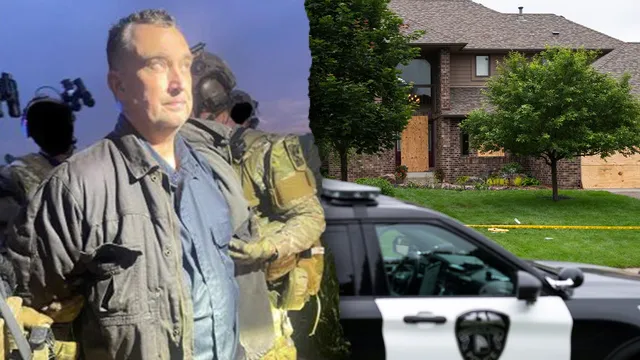
Alleged shooter Vance Boelter faces murder charges for Minnesota lawmaker deaths
2025-06-20 04:00- Vance Boelter was arrested and charged with multiple counts of murder in connection to attacks on two Democratic lawmakers in Minnesota.
- Boelter had an extensive list of lawmakers he allegedly targeted, showcasing premeditated plans for political violence.
- The tragic events highlight broader concerns regarding political extremism and mental health issues among individuals involved in political activism.
Express your sentiment!
Insights
In Minnesota, a series of violent assaults occurred in June 2025, resulting in the tragic deaths of a state representative and her husband. The accused, Vance Boelter, 57, was arrested by police following his involvement in these events. Eyewitness accounts detailed a chaotic scene at the Brooklyn Park home of Democratic Minnesota House Speaker Emerita Melissa Hortman and her husband, Mark. Boelter allegedly targeted the couple following a prior assault on Democratic state Senator John Hoffman and his wife, Yvette, in Champlin, just 90 minutes before Hortman's murder. The police investigation revealed that Boelter had a sophisticated plan to assassinate various political figures. He reportedly amassed a list of over 45 public officials, indicating a targeted approach towards Democrats. Linked to the late-night attacks, he attempted to disguise himself as law enforcement while carrying out the shootings, expressing a misguided sense of justice in his actions. His history of political appointment included roles on the Minnesota Governor's Workforce Development Board, where he served under both Mark Dayton and Tim Walz, further complicating his motivations and public perception. Prior to these acts, Boelter was described by friends as struggling with deep personal issues, including a lack of employment, which contributed to a feeling of disenfranchisement. It was noted that he had expressed frustrations in writings that hinted at extreme views and a disillusionment with societal problems. Despite his history of community involvement, his mental health deterioration culminated in horrific violence, reflecting a significant breakdown of his previously active role in community service and civic engagement. As details of the case emerged, it became evident that Boelter's actions were not solely out of random violence but instead appeared to stem from long-held perceptions of political injustice. His affiliations with various political beliefs and despair over personal circumstances contributed to a lethal combination that resulted in the targeted attacks against elected officials. As investigations proceed, the community grapples with the aftermath of this violent confrontation and the implications it holds for political discourse and safety in Minnesota.
Contexts
In recent years, the safety of lawmakers has become increasingly important due to rising concerns regarding threats of violence and harassment. This trend has prompted officials in Minnesota to assess and enhance safety measures for lawmakers at the state and local levels. A comprehensive review of existing protocols and security resources is paramount to ensuring that legislators can perform their duties without fear of harm. In light of several high-profile incidents both nationally and locally, Minnesota lawmakers are prioritizing the development and implementation of robust security strategies to safeguard their well-being and the integrity of the legislative process. One notable aspect of these safety measures includes the provision of personal security resources for lawmakers, particularly during public appearances or community events. Enhanced training programs focusing on situational awareness and emergency response tactics are also being introduced. These measures aim to equip lawmakers with the skills necessary to recognize and respond to potentially dangerous situations effectively. Moreover, advocacy for increased funding for security resources highlights the commitment of Minnesota officials to establish a safer working environment for their lawmakers, especially in a climate where threats have become more prevalent. Additionally, internal reviews and the establishment of clearer communication channels are critical components of Minnesota's safety strategy. Legislators are encouraged to report any threats or suspicious activities to state security personnel promptly. This proactive approach aims to foster a culture of vigilance among lawmakers, ensuring they are not isolated in their experiences but instead supported by a responsive security framework. The collaboration between lawmakers and security agencies will play a vital role in identifying vulnerabilities and addressing them adequately. To further bolster these initiatives, public awareness campaigns are being developed to educate constituents about the importance of maintaining a respectful discourse, even in dissenting viewpoints. Such outreach is intended to reduce the heat of political interactions and promote understanding, thus minimizing the potential for conflict. By reinforcing the safety measures in place and fostering a culture of respect towards elected officials, Minnesota aims to ensure that its legislators can fulfill their roles effectively and without undue concern for personal safety. Ultimately, these strategic enhancements to security and community engagement will work together to uphold the integrity of Minnesota's legislative process.